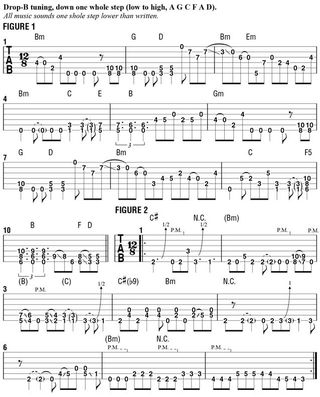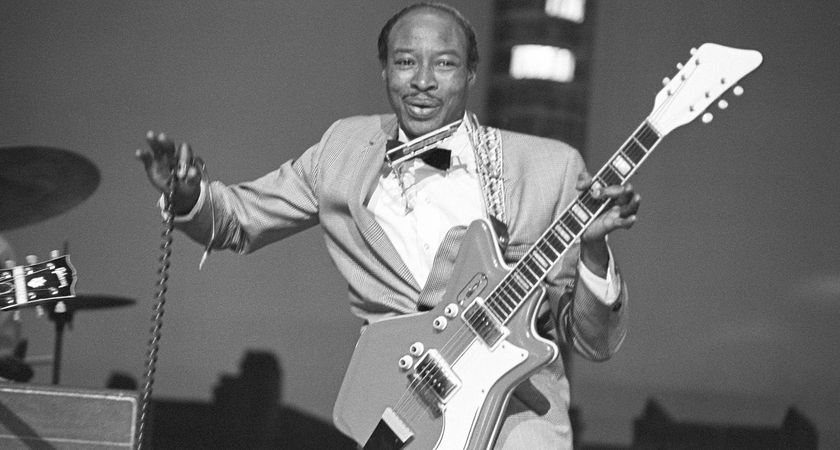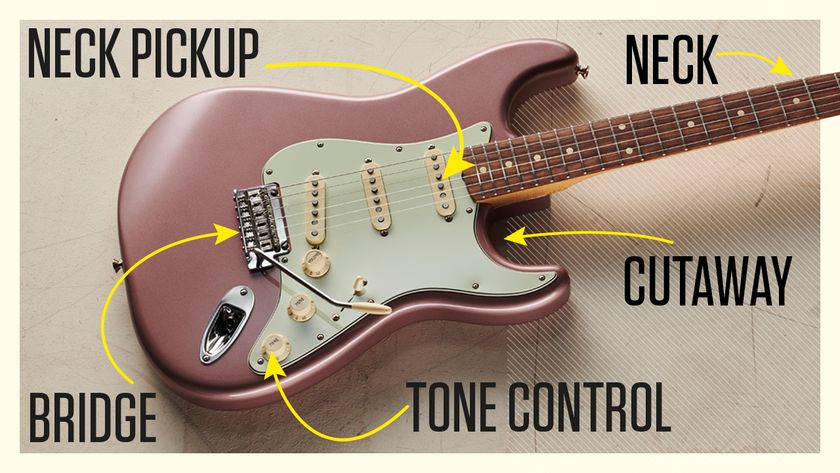Exploring 12/8 Meter and Periphery's “Prayer Position”

Hello everyone, and welcome back to Holcomb Mania! It’s great to be back in the pages of Guitar World as a columnist.
Over the next several months, I’ll be demonstrating many of the techniques that my band mates in Periphery and I employ in the formulation of our music, using some examples from our latest album, Periphery III: Select Difficulty, to illustrate.
For this first column, I’d like to focus on the song “Prayer Position,” the album’s sixth single. A few months ago, I put out a request on the band’s website to see which songs our fans would most like to see broken down in these columns. There were a lot of requests for “Prayer Position,” so here we go!
“Prayer Position” is played in a “drop-A” tuning, which is the same as the somewhat typical drop-B tuning (low to high, B A D G B E), but with all six strings additionally tuned down one whole step (low to high, A G C F A D). In this case, I find it easier to think of everything in a “transposing” manner, as if the fifth through first strings were tuned normally and the sixth string was tuned to B. This makes navigation through the riffs and chords much easier to understand.
One of my favorite things about this tuning is that an octave is sounded when fretting what would normally be a root-fifth power chord shape on the bottom strings. “Prayer Position” is unique because it is one of the very few Periphery songs that is played with a triplet feel, best represented here in 12/8 meter. One of the beautiful things about 12/8 is that the alignment of three evenly spaced eighth notes per beat allows for all kinds of rhythmic ambiguity when putting the riffs and patterns together.
FIGURE 1 illustrates the song’s opening phrase, which is constructed from a variety of techniques that are at the heart of many of our songs—lots of pull-offs, hammer-ons, open strings and position shifts and a high degree of fretboard mobility. In bar 1, on beat one, I attain a power-chord vibe by playing the notes of a B5 power chord individually, followed by rhythmic accentuation of the open sixth string.
The aforementioned two-note octave shapes, played on the bottom two strings, follow at the beginning of bar 2; on the upbeat of beat three, I begin a long single-note riff that includes several ringing open strings. In bar 5, I shift from two-note octaves to a root-major third voicing on the bottom two strings, and the five-bar riff culminates with two beats of single notes.
At this point, the first two bars repeat, and bar 8 begins like bar 3, but I add a twist starting on the upbeat of beat two through beat three. At the end of bar 9 and into bar 10, I move from a three-note F5 power chord to a similarly voiced B major chord, and the phrase ends with unexpected sliding octaves.
For the verse section, illustrated in FIGURE 2, we decided to take a more “caveman” approach and simplify matters a little bit. This phrase is simpler inasmuch as it’s mostly comprised of single notes and two-note figures, with stronger accents on the downbeats throughout. But it is still intentionally deceptive, rhythmically, so work through each bar slowly and carefully.

Get The Pick Newsletter
All the latest guitar news, interviews, lessons, reviews, deals and more, direct to your inbox!

Marcin’s percussive fingerstyle is dropping jaws with its stunning mix of speed, complexity and explosive dynamics. The warm-ups that fuel his virtuosity are guaranteed to boost your own playing

It’s the flamenco technique that lit the rhythmic fire under Marcin and Paco de Lucía, and treats all four fingers and thumb as separate plectrums – why learning rasgueado will give your picking hand a huge turbo boost









